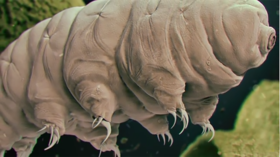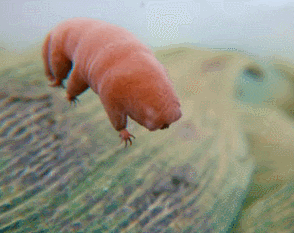Did Israel colonize the Moon? Near-invincible ‘water bears’ may have SURVIVED lunar probe crash

Thousands of microscopic, near-indestructible creatures called tardigrades may be living on the moon after the Israeli probe Beresheet crash-landed earlier this year, according to the group that loaded them onto the spacecraft.
“We believe the chances of survival for the tardigrades… are extremely high” based on an analysis of the crashed probe’s trajectory and the device in which the creatures were stored, Nova Spivack, whose Arch Mission Foundation is dedicated to spreading “backups” of human knowledge and terrestrial biology beyond Earth, told AFP.
The tardigrades that hitched a ride on Beresheet were dehydrated and encased in a type of epoxy called “Artificial Amber,” prepped for future revival. They were accompanied by a compendium of human history and DNA viewable under microscopes in Arch’s “Lunar Library,” a DVD-like nanotech device designed as a quick reference guide to humanity.

Tardigrades are famous for being able to survive the most extreme conditions, so if they didn’t burn up in an explosion as the probe crashed to the lunar surface, they could theoretically survive for years, capable of withstanding huge amounts of radiation, heat, and cold, according to NASA biologist Cassie Conley. “I’d be more concerned that the animals would be affected by toxic chemicals from the epoxy or glue” used to preserve them, she added.
But they’d need air, water, and food to grow, reproduce, and form a colony, fellow tardigrade expert William Miller argued, and the chance of another spacecraft coming to their rescue is slim. Even if NASA’s Artemis moon mission is completed on time – an unlikely possibility, given that agency’s current struggles – that crew will be landing at the moon’s south pole, far from the Sea of Serenity where thousands of tardigrades could be marooned.
Also on rt.com Molecular diamonds & golden asteroids: Your guide to becoming a space trillionaireThink your friends would be interested? Share this story!













